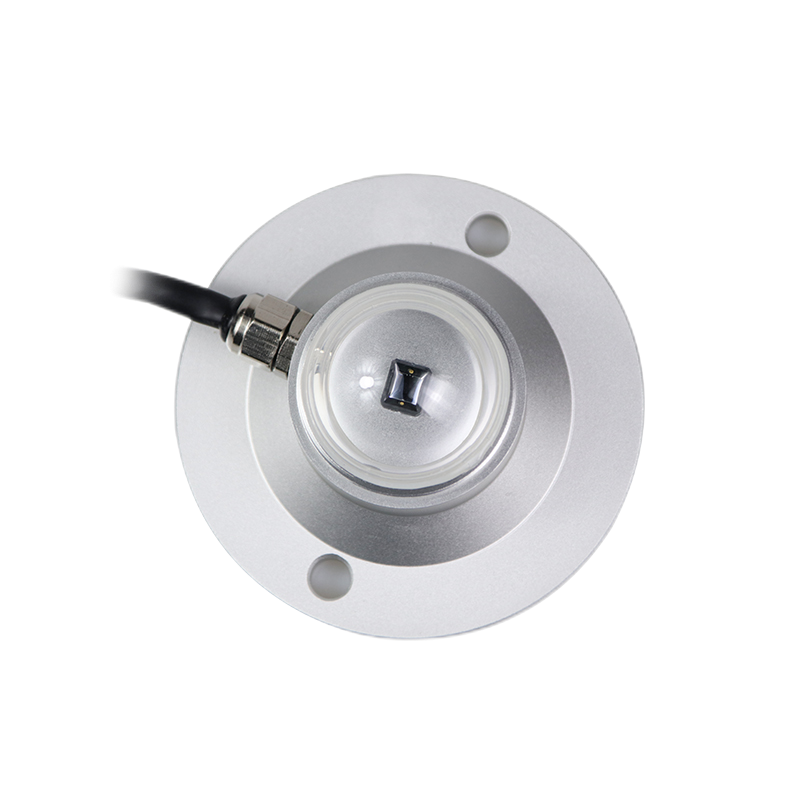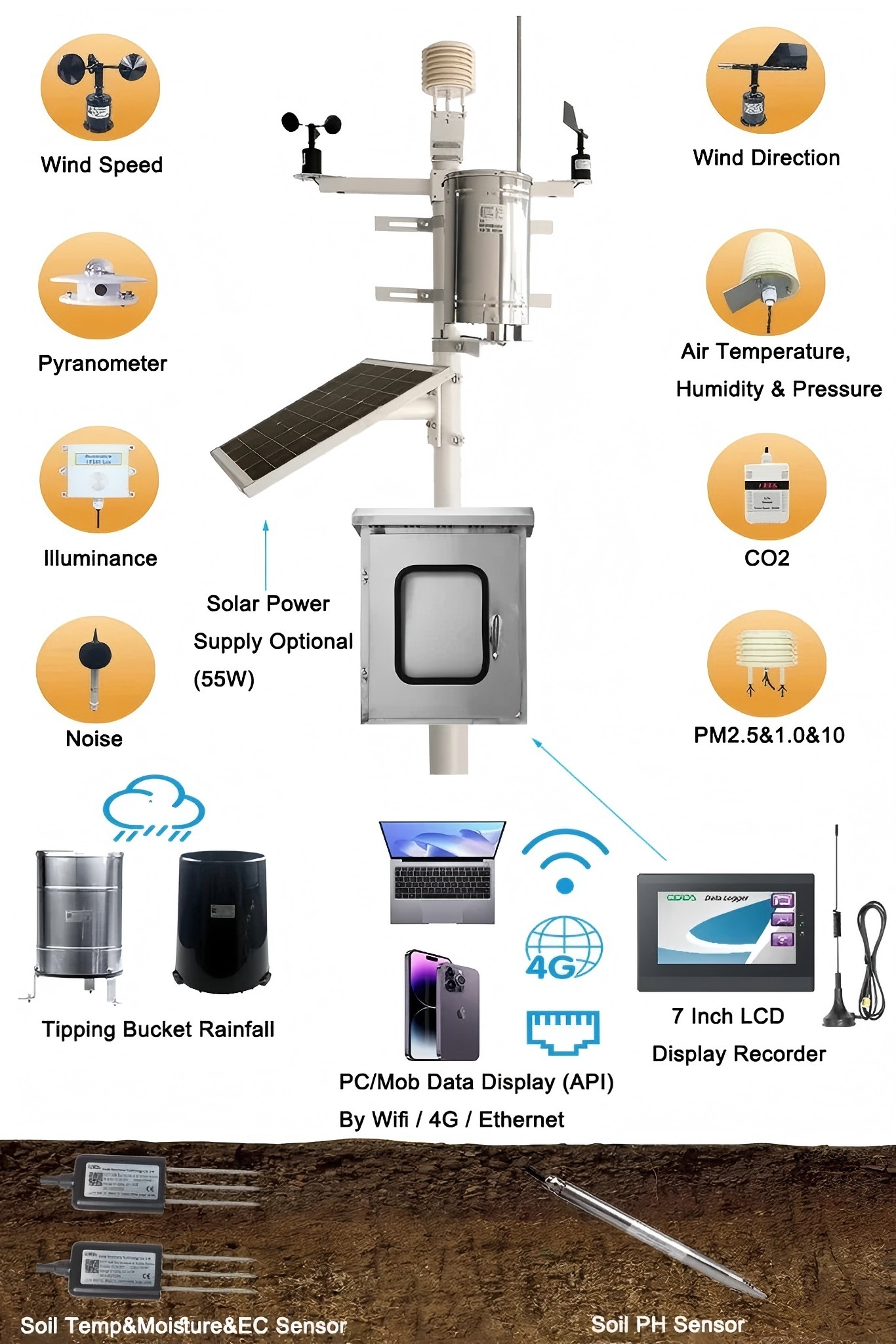In today’s data-driven agricultural landscape, technological innovation has become indispensable for farmers aiming to increase productivity, reduce costs, and achieve sustainability. Among the many environmental variables that influence plant growth, solar radiation is one of the most critical—yet often underutilized—resources. Accurate measurement and analysis of solar radiation can unlock significant gains in crop performance and farm efficiency. This is where solar radiation sensors prove their value.

Solar radiation refers to the electromagnetic energy emitted by the sun, including visible light, ultraviolet, and infrared rays. It is the primary energy source for photosynthesis, the fundamental process by which plants convert sunlight into chemical energy.
For agriculture, the amount and consistency of solar radiation received directly impact:
The rate of photosynthesis and biomass accumulation
Plant development stages such as germination, flowering, and fruiting
Water usage efficiency and transpiration rates
Crop yield and quality outcomes
Many factors influence the availability of solar radiation at the ground level, including:
Time of year and time of day
Latitude and elevation
Weather patterns (e.g., cloud cover, haze, and fog)
Pollution levels and atmospheric composition
Because these conditions fluctuate daily and seasonally, continuous monitoring of solar radiation is crucial for informed decision-making in agricultural management.
Solar radiation sensors, also known as pyranometers, are precision instruments designed to measure the intensity of solar energy received on a horizontal surface. These devices are typically installed in fields, mounted on weather stations, or integrated into automated systems to collect real-time environmental data.
Modern solar sensors measure two primary types of radiation:
Global solar radiation: This includes both direct sunlight and diffuse radiation scattered by the atmosphere.
Photosynthetically Active Radiation (PAR): This is the specific range of wavelengths (400–700 nm) that plants use for photosynthesis.
These measurements are essential for understanding how much usable light is available to crops throughout the day and over the course of the growing season. Many advanced sensors also record accumulated solar energy (MJ/m² or W/m²), which is valuable for calculating solar exposure over time.
Accurate radiation data enables farmers to estimate crop growth potential and forecast yields more reliably. If solar levels are below seasonal norms, farmers can adapt by modifying fertilizer schedules, adjusting planting dates, or selecting crop varieties better suited for low-light conditions.
Solar radiation directly influences evapotranspiration—the combined process of water evaporation from soil and plant transpiration. Knowing how much solar energy is driving moisture loss helps farmers optimize irrigation timing and volume, reducing both water waste and crop stress.
Different crops have distinct sunlight requirements. By analyzing historical solar radiation data, farmers can make informed decisions about which crops to plant and when. This is especially useful for high-value or light-sensitive crops such as grapes, tomatoes, or leafy greens.
In controlled environments like greenhouses, solar radiation sensors can be used to regulate artificial lighting systems, ventilation, shading, and cooling mechanisms. Maintaining optimal light levels leads to better growth conditions and energy savings.
Solar radiation sensors can be seamlessly integrated into automated irrigation, fertilizer dosing systems, and climate control platforms, allowing for data-driven decision-making. When paired with other sensors (soil moisture, temperature, humidity), solar radiation data becomes a key input for comprehensive farm optimization.
With increasing climate variability, long-term solar radiation monitoring allows farmers to recognize emerging patterns, prepare for extreme weather events, and fine-tune their agronomic strategies. This adaptive capability is vital for long-term resilience and food security.

Coda Sensor is dedicated to advancing smart agriculture through cutting-edge environmental monitoring solutions. Our solar radiation sensors are engineered for accuracy, reliability, and long service life, even in the most challenging field conditions.
Key advantages of Coda Sensor’s radiation solutions include:
High-precision measurements of both global solar radiation and PAR
Fast response times for real-time decision-making
Rugged construction that withstands wind, rain, dust, and UV exposure
Compatibility with various data loggers, weather stations, and IoT platforms
From smallholder farms to large-scale agribusinesses, Coda Sensor’s technologies provide actionable insights that help maximize efficiency, increase crop performance, and reduce resource consumption.
As agriculture becomes more complex and climate uncertainties grow, solar radiation monitoring is no longer optional—it is essential. The ability to measure and analyze solar energy allows farmers to optimize every aspect of their operation, from crop planning and water use to greenhouse management and automation.
Coda Sensor offers the tools to help farmers harness the power of sunlight. By integrating our solar radiation sensors into your agricultural practices, you gain the confidence to make informed, data-backed decisions that improve yields, conserve resources, and promote sustainability.
Embrace the power of solar intelligence. Choose Coda Sensor to elevate your farming strategy.
Discover how real-time weather station data impr
Discover how Automatic Weather Stations (AWS) ar
Discover how CODA gas sensors are the invisible
Contact: Molly
Phone: +86-17775769236
Tel: 86-0731-85117089
Email: molly@codasensor.com
Add: Building S5, Aux Square, Yuelu District, Changsha City, Hunan Province, China
We chat